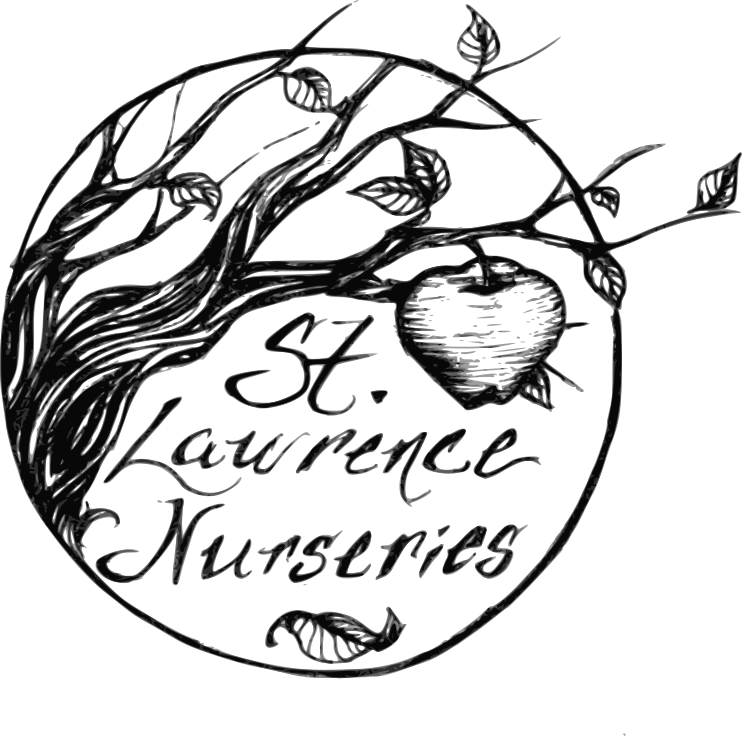About Our Trees
Growing Zone
Our trees are grown in a Zone 3/4 location where they have been tested against temperatures of -30°F, -40°F and occasionally even -50°F (ambient temperature, no wind chill). Most commercial nursery stock is grown in Zones 5 or warmer, where the coldest winter extremes a plant might endure are about -20°F. A plant that is “hardy” only to -20°F may, with luck, survive one or two mild winters in Zone 3 or 4, but will eventually winter kill. If this has happened to you, take heart! You don't have a “black thumb;" you just need varieties that are hardy enough. We rate our trees according to winter hardiness and guarantee their survival. Even if you live in USDA Zone 3 or 4, you can grow fruit and nut trees. All you need are the right varieties!
(A note for our Canadian friends: regrettably, we are not able to ship orders to Canada. We suggest that Canadians check out www.hardyfruittrees.ca. They are a wonderful nursery in Quebec with similar inventory and values!)
Organically, Increasingly Regeneratively Grown
Because we are committed to preserving the health of the air, water, and soil, (and ourselves) we use no conventional herbicides, fungicides or pesticides. Instead of artificial fertilizers, we rely on mulch, manure, and cover crops to boost soil and plant health. We use natural immune boosters like compost tea to help our plants fight disease naturally. In our orchard, a regimen of Neem Oil and kaolin clay gives us fruit that is safe to eat, delicious and nutritious. Rather than using mechanical digging machines, we hand-plant, hand-weed and hand- dig all of our stock. We are not certified organic, but the principals are of the utmost importance to us. We are also moving in a regenerative, minimal-till direction as it becomes clear that this is where agriculture needs to go; even for the tiniest of farms like us!
What Our Trees are NOT
Our trees are not like the trees that you often see lined up at your local garden center in springtime: tall, beefy specimens grown in a favorable climate (Zones 5 to 7) and pushed with nitrogen fertilizers. Heavy reliance on chemical fertilizers produces a “top-heavy” tree with a disproportionately small root, which is then machine-dug (often cutting or damaging roots in the process) and shipped, first from grower to wholesaler, then from wholesaler to retailer. This is a journey which often leaves the tree water-stressed. The root is encased in fertilizer-enhanced media and potted or wrapped in burlap, which the customer is instructed not to remove, rather conveniently making it impossible to determine the condition of the tree's root system. Although trees should be planted when they are dormant, garden centers often sell them in full leaf. Trees sold in this way are almost never covered by a guarantee.
What Our Trees ARE
Our trees are grown in a cold, northern climate (USDA Zone 3/4). Trees that are unable to withstand temperatures of minus -30°F to minus -40°F will not survive our winters, and if we cannot grow it here, we don’t sell it. However, trees do grow more slowly in cold locations with short growing seasons, and nurseries are not exempt from this law of nature. We do not “push” our trees with artificial fertilizers, but use natural methods to encourage an optimum growth rate. The result is a smaller, but tougher tree with a more balanced proportion of root to top, which will establish itself well and harden off properly before winter. If you live in USDA Zone 3 or 4, you've probably been disappointed before by trees that were proclaimed to be “cold hardy.” Where was the tree grown? A tree that has been through -40°F winters has proven itself to be truly cold hardy. This means that a tree from our nursery will grow for you even if you live in a severely cold climate, whereas a tree from a conventional nursery located in a warmer growing zone may winterkill or simply survive without much growth or fruit. Hardiness is our specialty!
Guarantee
As your plant supplier, our job is to ship you a healthy plant that is true to name and claim. As the customer, your job is proper planting, mulching and regular watering of that plant, and protection from mice, rabbits, deer and other plant-munching creatures. If a plant dies anytime within its first growing season, let us know! We will work with you to determine the fairest course of action. If it seems that the plant did not survive in spite of proper care on your part, we will replace it at no charge. In some cases, we may ask you to pay for shipping or offer to split the cost of replacement with you. Tell us what went wrong, and we'll try to help you figure out what you can do to guarantee success with the next planting.
